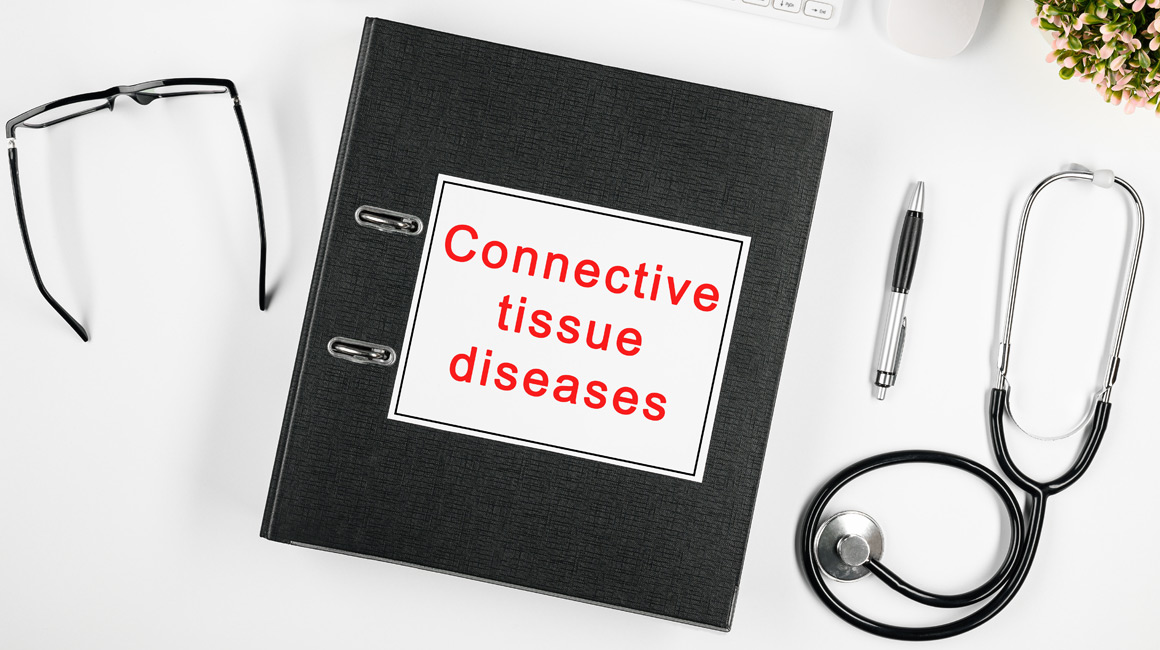
Connective Tissue Disease
A connective tissue disease is any disease that affects the parts of the body that connect the structures of the body together. Connective tissues hold the structures of the body together. They are made up of two different proteins, collagen and elastin. Collagen is a protein found in the tendons, ligaments, skin, cartilage, bone and blood vessels. Elastin is a stretchy protein found in the ligaments and skin. When the collagen and elastin become inflamed, it can harm the proteins and surrounding areas of the body.
Types
There are more than 200 different types of connective tissue diseases. Connective tissue disease include, but are not limited to:
- Rheumatoid Arthritis (RA): An autoimmune disease causing joint inflammation and pain. See page on Rheumatoid Arthritis for more details.
- Scleroderma: An autoimmune condition that causes scar tissue to form in the skin, internal organs, and small blood vessels.
- Granulomatosis with Polyangiitis (GPA, formerly called Wegener’s): A form of vasculitis that affects the nose, lungs, kidneys, and other organs.
- Churg-Strauss Syndrome: A form of vasculitis that affects cells in the blood vessels of the lungs, gastrointestinal system, skin and nerves.
- Systemic Lupus Erythematosus (SLE): An autoimmune disease that occurs when your body’s immune system attacks your own tissues and organs. See page on Systemic Lupus Erythematosus for more details.
- Sjogren’s syndrome: An autoimmune disease that affects lacrimal glands and salivary glands causing dry mouth and dry eye symptoms. It can be primary or secondary associated with another rheumatological autoimmune condition.
- Mixed connective tissue disease (MCTD): Also known as the Sharp syndrome. A condition that has some features of various connective tissue disease such as scleroderma, systemic lupus erythematosus, and polymyositis.
Symptoms
Symptoms of connective tissue disease will depend on the disease but can include:
- General feeling of being unwell
- Fingers and toes change colors when exposed to the cold
- Swollen fingers or hands
- Joints can become inflamed, swollen and deformed, similar to what occurs with rheumatoid arthritis
- Rashes
Causes
Genetic factors may predispose you to a connective tissue. It can also be triggered by the environment such infections, exposure to ultraviolet light, exposure to certain toxins or medications.
Treatment
Treatments such as corticosteroids for connective tissue disease is aimed at helping to reduce inflammation. Your Rheumatologist may prescribe specialized medications to treat your specific connective tissue disease with the goal of controlling the inflammation to attain remission. Physical and occupational therapy may be used to manage symptoms to help adjust to living and working situations.

